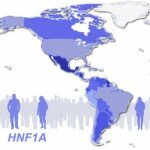This guest post was contributed by Joseph Buxbaum, Mark Daly, Silvia De Rubeis, Bernie Devlin, Kathryn Roeder, and Kaitlin Samocha from the Autism Sequencing Consortium (see affiliations and details at the end of the post).
Autism spectrum disorder (ASD) is a highly heritable condition characterized by deficits in social communication, and by the presence of repetitive behaviors and/or stereotyped interests. While it is clear from family and twin studies that genetic factors contribute strongly to the onset of this disorder, the search for specific risk genes for ASD has only recently begun to yield fruit. Finding these specific genes is critical not only for providing potential diagnoses for individual families, but also for obtaining insights into the pathological processes that underlie this neurodevelopmental disorder, which may ultimately lead to novel therapeutic approaches. Identification of ASD genes may at some point also reveal part of what makes us social beings.
In a paper published in Nature last week we and the other members of the Autism Sequencing Consortium (ASC) describe the application of whole exome sequencing (WES), selectively sequencing the coding regions of the genome, to identify rare genetic variants and then genes associated with risk for ASD. WES data were analyzed from nearly 4,000 individuals with autism and nearly 10,000 controls. In these analyses, we identify and subsequently analyze a set of 107 autosomal genes with a false discovery rate (FDR) of <30%; in total, this larger set of genes harbor de novo loss of function (LoF) mutations in 5% of cases, and numerous de novo missense and inherited LoF mutations in additional cases. Three critical pathways contributing to ASD were identified: chromatin remodelling, transcription and splicing, and synaptic function. Chromatin remodelling controls events underlying neural connectivity. Risk variation also impacted multiple components of synaptic networks. Because a wide set of synaptic genes is disrupted in ASD, it seems reasonable to suggest that altered chromatin dynamics and transcription, induced by disruption of relevant genes, leads to impaired synaptic function as well.
In this post we wanted to focus on an easily-overlooked aspect of this paper: the use of a false discovery rate (FDR) approach to identifying genes for follow-up analysis. While FDR is a well-recognized approach in biology, one could also argue for using a family wise error rate (FWER), which has been the norm in recent large-scale, genome-wide association studies (GWAS). So why did we decide to take this alternative approach here?
Continue reading ‘Incorporating false discovery rates into genetic association in autism’

 RSS
RSS Twitter
Twitter
Recent Comments